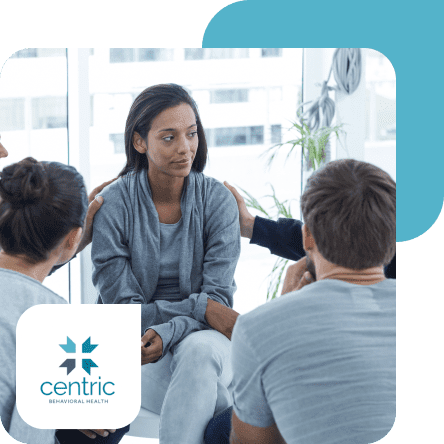Drug Rehab Statistics
In 2019, 20.4 million Americans reported having a substance use disorder (SUD) in the past year. Only 10.3 percent of the millions of Americans with a substance use disorder (SUD) received any treatment.
Battling addiction and ready for treatment?
Statistics on Addiction Treatment
There are many options for treatment, including inpatient rehab, outpatient rehab, medication-assisted treatment, and behavioral therapies.
Patients are asked what substance they struggle with most when admitted into a treatment program. Below are percentages of treatment admissions by primary substance:
- Alcohol – 30.8%
- Opiates – 30.3%
- Cocaine – 5.8%
- Marijuana – 11.2%
- Prescription Stimulants – 11.9%
- Other Substance – 2.3%
Addiction Treatment Demographic Statistics
Addiction affects people of all ages, races, ethnicities, genders, and sexual identities. However, not everyone receives the treatment they need for various reasons.
Addiction Treatment Statistics by Gender/Sex
Most people who receive substance use treatment are male. Males make up about 49% of the U.S. population, but they make up about 64.8% of those receiving addiction treatment.
Females comprise about 51% of the U.S. population but only 35.2% of the addiction treatment population.
Addiction Treatment Statistics by Age
Age greatly impacts who reports substance use and who gets help.
- 14.1% of 18-25-year-olds reported having a SUD compared to 7.4% of everyone over age 12.
- Only 8.7% of 18-25-year-olds with SUD received treatment.
- 58% of treatment admissions were between the ages of 25 and 44.
- 6.7% of people age 26 and older reported having a SUD.
- Only 11% of people 26 and older with SUD received treatment.
Addiction Treatment by Race/Ethnicity
The most complicated issue while studying addiction treatment statistics is race. Numerous studies show that race/ethnicity is correlated to treatment rates.
Treatment admissions by race/ethnicity in 2019:
- American Indian/ Alaska Native – 2.9%
- Asian/Native Hawaiian/Pacific Islander – 1%
- Black/African American – 20%
- White – 66.3%
- Other – 9.7%
- Of those, 14.5% identified as ethnically Hispanic.
Black Americans and Hispanic Americans with substance use disorders (SUDs) are more likely to be met with jail time than White Americans instead of the help they need. While world leaders have been moving toward treating SUD as a health issue instead of a crime, it remains an issue.
- Black people are about four times more likely to be arrested for cannabis possession than white people despite similar rates of use.
- In 2013, 56% of people imprisoned in the U.S. for drug offenses were Black or Latino despite only making up a quarter of the population.
- One study from Florida found that Black Americans experienced delays that lasted 4-5 years while trying to enter treatment, causing their addiction to worsen. These delays could not be attributed to socioeconomic status alone.
- Black youths with opioid use disorder are between 42% and 49% less likely than white youth to be prescribed medication-assisted treatments.
- Black patients with opioid use disorder are 77% less likely than white patients to be prescribed buprenorphine (an opioid addiction medication).
How Drug Rehab Helps Reduce Overdose Numbers
About 70,000 Americans died of an overdose in 2019; by 2020, that number had increased to 100,000, an increase of 43%. Getting treatment as soon as possible is the best way for those who have developed an addiction to avoid dangerous health effects, including overdose.
A recent study of 48,274 adults seeking specialty outpatient treatment for opioid use disorder showed evidence that medication-based treatment helped prevent overdose deaths.
- Patients receiving medication therapy were five times less likely to die of overdose during treatment than patients receiving other types of care.
- Unfortunately, after discharge, the difference in death rates disappeared.
- However, patients who remained in treatment longer, especially at least 12 months, were less likely to overdose after discharge.
“I was not surprised to find that medication treatments like methadone and buprenorphine are protective against overdose relative to non-medication treatments, but the difference—with medication treatment five times more protective—was striking,” said Dr. Noa Krawczyk who led the study, “I was also rather surprised (and disappointed) to see that once people are no longer in care, medication has no remaining protective effect. This really drove home the importance of focusing on retention in medication treatment and not only on initial engagement.”
Medication-Assisted Addiction Treatment Statistics
Scientists have also developed several medications to help people with SUDs on their road to recovery. This approach is known as Medication-Assisted Treatment (MAT).
Methadone
Methadone has been used since 1947 to treat opioid use disorder. Methadone has been proven effective at reducing opioid use by many studies over the years.
Patients taking methadone have about 33% fewer opioid-positive drug tests during treatment. They are also about 4.44 times more likely to stay in treatment.
Methadone effectively reduces opioid use, with or without additional counseling services.
Buprenorphine
Buprenorphine is an opioid that was first approved in 2002 for treating opioid use disorder. It’s available on its own as Probuphine®, Sublocade™, and Bunavail® and in combination with naloxone (an opioid receptor antagonist) as Suboxone® and Zubsolv®.
According to one study:
- The treatment failure rate for patients taking buprenorphine was only 25%, while the failure rate for the placebo group was 100%.
- Patients taking at least 16mg of buprenorphine a day were 1.82 times more likely to stay in treatment than placebo patients.
- Buprenorphine decreased the number of opioid-positive drug tests by 14.2%.
Naltrexone
Naltrexone is an opiate antagonist drug. Opiate antagonists block opioid receptors to keep patients from feeling the effects of opioids. Naltrexone is used to treat opioid use disorder and alcohol use disorder.
Naltrexone is most effective when used as an extended-release injection. In one Russian study, 90% of patients treated for opioid use disorder with extended-release injectable naltrexone confirmed abstinent weeks. Only 35% of the placebo group confirmed the same.
Addiction Recovery Statistics
The ultimate goal of addiction treatment is recovery. Addiction recovery can mean different things to different people. Many people with a substance use disorder need years of treatment and support to feel like they’ve reached recovery. People in recovery have regained their normal social function and voluntarily make positive choices instead of abusing drugs.
Recovery is not an easy task. It can sometimes take as long as 8 or 9 years for someone to recover after initially seeking help. However, there is hope.
Millions of Americans with SUDs have sought help and made progress in their journey toward recovery:
- 50% of adults (about 25 million people) who once had a substance use disorder are in stable remission for 1 year or longer.
- About 10% of the U.S. population is in recovery from some substance use disorder.
- The rate of sustained remission after substance use disorder treatment is about 35%.
If you or someone you love is struggling with an addiction. Do not hesitate to seek help. There are many forms of treatment available, and recovery is attainable.
Centric Behavioral Health, our paid treatment center sponsor, is available 24/7:
Learn More About Centric or For Immediate Treatment Help, Call (888) 694-1249.


